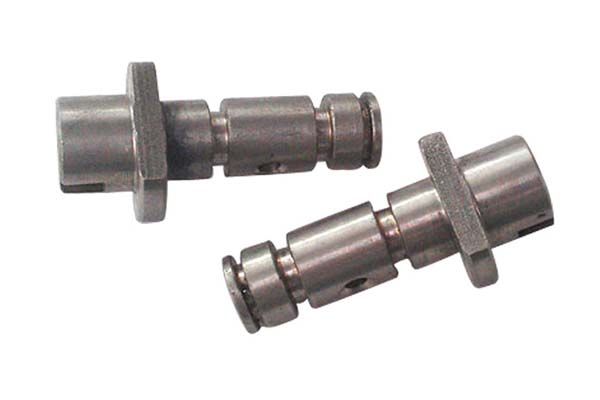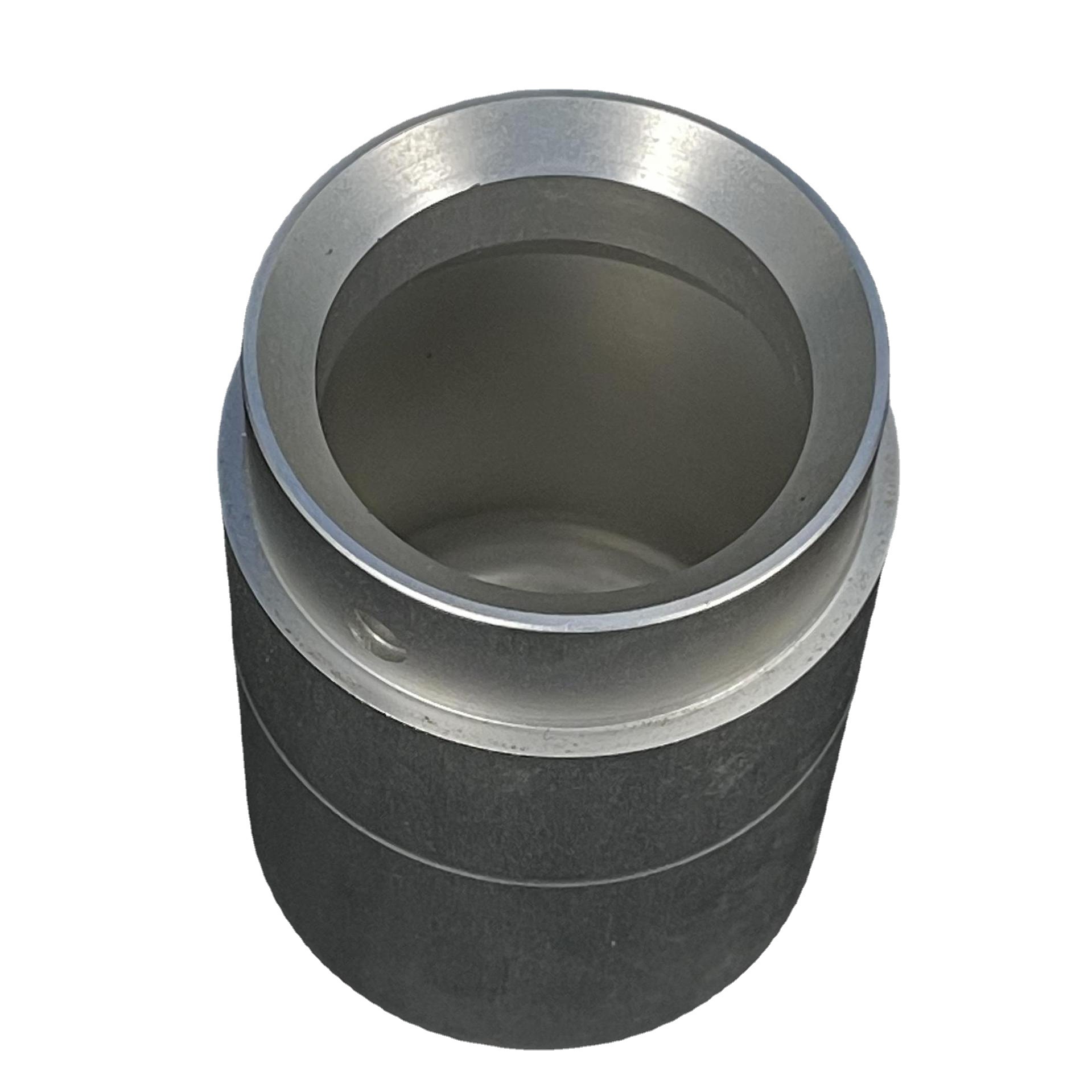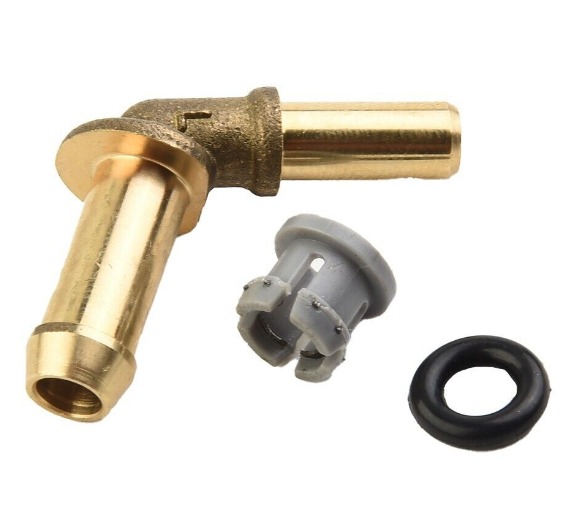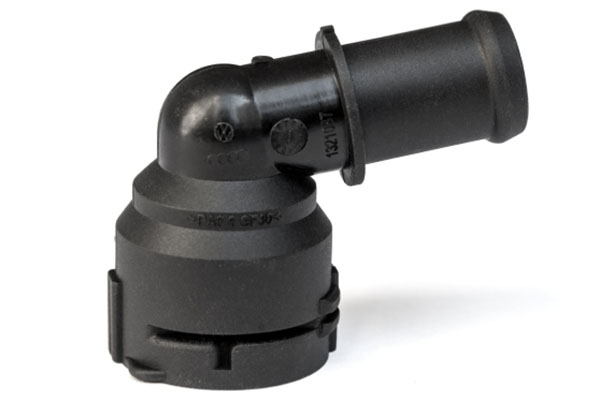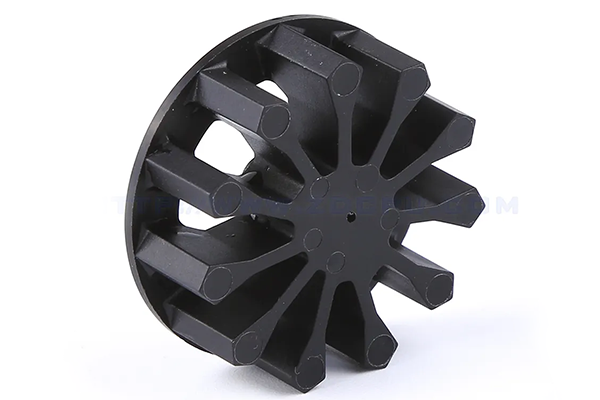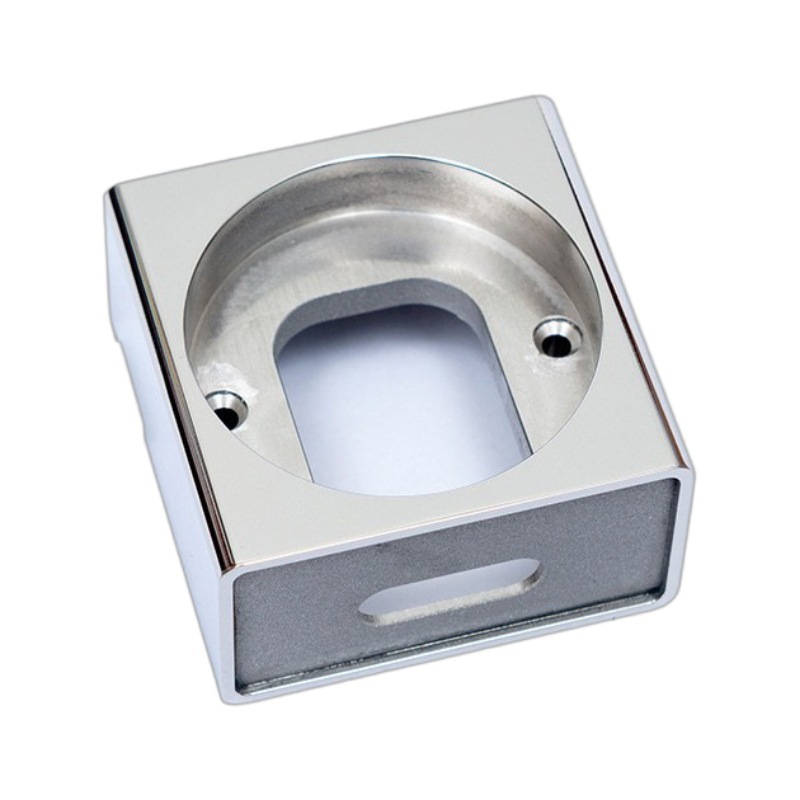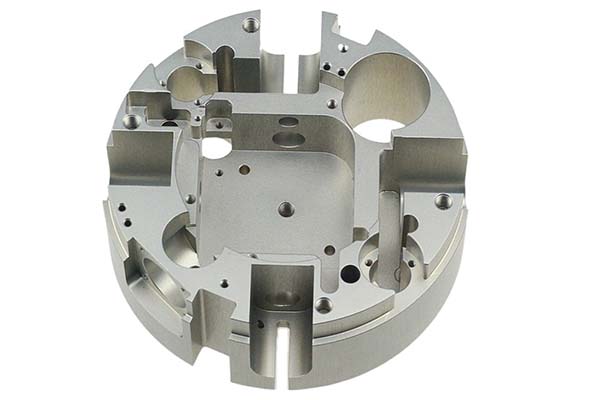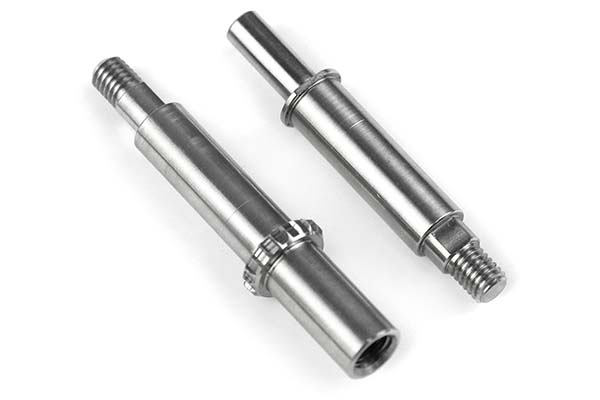Manufacturers working with 17-4PH stainless steel (also known as SS630) face unique challenges that set it apart from other stainless steels. This precipitation-hardening (PH) stainless steel offers exceptional strength and corrosion resistance, but its high hardness—even in the annealed state—leads to rapid tool wear, increased cutting forces, and significant work hardening during machining. These challenges can slow production, drive up costs, and compromise part quality. This guide addresses these pain points, providing actionable strategies to optimize CNC machining 17-4PH (SS630) for consistent, high-quality results.
Material Overview of 17-4PH (SS630)
17-4PH stainless steel (SS630) is a martensitic precipitation-hardening (PH) stainless steel renowned for its unique combination of strength and corrosion resistance. Let’s explore its key characteristics:
- Mechanical properties: In the solution-annealed condition (Condition A), it has a tensile strength of 620 MPa, yield strength of 415 MPa, and hardness of 24-28 HRC. After precipitation hardening (e.g., H900), these values jump to 1310 MPa (tensile), 1170 MPa (yield), and 40-44 HRC.
- Corrosion resistance: Superior to most martensitic stainless steels, comparable to 304 in many environments, with good resistance to water, steam, and mild chemicals.
- Work hardening: Exhibits moderate to high work hardening rates during machining, especially when processed in the hardened condition.
- Chemical composition: 15-17% chromium, 3-5% nickel, 3-5% copper, 0.15% maximum carbon, and small amounts of niobium (to stabilize carbides).
- Heat treatability: Its strength is achieved through low-temperature precipitation hardening (aging), which avoids distortion—critical for precision parts.
These properties make 17-4PH stainless steel ideal for applications requiring both high strength and corrosion resistance.
CNC Machining Processes for 17-4PH
Core Machining Operations
CNC machining 17-4PH (SS630) requires precise control of processes and parameters to manage its hardness and work hardening tendencies:
- CNC milling: Used for complex geometries. Climb milling is preferred to reduce work hardening and tool wear.
- CNC turning: Ideal for cylindrical parts, but requires rigid setups to counteract high cutting forces.
- CNC drilling and CNC boring: Require sharp tools and high coolant pressure to prevent heat buildup at the cutting edge.
- Machining centers and multi-axis machining: Improve efficiency for complex parts, reducing setup times and ensuring dimensional accuracy across multiple features.
Optimal Cutting Parameters
| Operation | Cutting Speed (m/min) | Feed Rate (mm/rev) | Depth of Cut (mm) |
| CNC milling (carbide) | 80-150 | 0.08-0.15 | 1-3 |
| CNC turning (carbide) | 100-200 | 0.1-0.2 | 1-4 |
| CNC drilling (carbide) | 60-120 | 0.05-0.1 | 1-2 |
Parameters vary by heat treatment condition: Machining in the annealed state (Condition A) allows higher speeds and feeds than machining in hardened conditions (e.g., H900), which require 20-30% slower speeds to minimize tool wear.
Tool Selection and Tooling for 17-4PH
Choosing the Right Tools
Tool selection is critical for successful CNC machining 17-4PH (SS630). The wrong tools can lead to excessive wear, poor surface finish, and increased costs:
- Cutting tools: Carbide tools are essential; uncoated carbide works for general applications, while fine-grain carbide (WC-Co with 6-10% Co) offers better wear resistance for hardened 17-4PH. Ceramic tools can be used for high-speed machining but require rigid setups to avoid chipping.
- Tool coatings: AlTiN coatings are ideal, extending tool life by 40-60% compared to uncoated carbide by reducing friction and heat buildup. TiAlN coatings also perform well, especially in high-speed applications.
- Tool geometry: Negative rake angles (-5° to 0°) improve edge strength, while larger relief angles (8-12°) prevent rubbing against work-hardened material. Round inserts with a tough substrate are preferred for heavy cuts.
- Tool holders: Rigid, shrink-fit holders minimize tool deflection, critical for maintaining dimensional accuracy in high-strength materials.
- Coolant delivery systems: High-pressure coolant (70-100 bar) delivered through the tool ensures effective chip evacuation and heat reduction.
Surface Finish and Quality Control
Achieving Desired Surface Characteristics
Surface finish is critical for 17-4PH (SS630) parts, especially in applications where fatigue resistance or corrosion performance matters:
- Surface roughness: In the annealed condition, achievable Ra values range from 0.8 μm (finish machining) to 3.2 μm (roughing). In hardened conditions, Ra values of 1.6-6.3 μm are more typical due to increased hardness.
- Surface finish requirements: Aerospace components often require Ra ≤ 1.6 μm to maximize fatigue resistance, while industrial parts may accept Ra ≤ 3.2 μm.
- Finishing processes: Grinding and polishing are effective for improving surface smoothness, while electrochemical finishing can achieve Ra ≤ 0.05 μm for critical applications.
Quality Control Measures
- Inspection methods: Coordinate Measuring Machines (CMM) verify dimensional accuracy, while profilometers measure surface roughness (Ra, Rz).
- Quality control standards: Compliance with ASTM A564 (for precipitation-hardening stainless steel bars) and ISO 9001 ensures consistent quality.
- Surface defects to monitor: Built-up edge (BUE) can cause surface tearing, while insufficient coolant leads to discoloration—both compromise corrosion resistance and fatigue performance.
Heat Treatment and Post-Machining Processes
Critical Heat Treatment for 17-4PH
17-4PH stainless steel’s unique properties stem from its heat treatment:
- Solution annealing (Condition A): Heating to 1040-1065°C, followed by air cooling. This softens the material (24-28 HRC), making it easier to machine.
- Precipitation hardening (aging): Heating to 482°C (H900) for 1 hour, 552°C (H1025) for 4 hours, or 621°C (H1150) for 4 hours. This process forms copper-rich precipitates, increasing strength without significant distortion.
- Stress relief annealing: After machining, parts may undergo 316°C for 1 hour to reduce residual stresses, especially critical for large or complex components.
Post-Machining Processes
- Passivation: A nitric acid treatment removes free iron from the surface, enhancing corrosion resistance by 20-30%.
- Electropolishing: Improves surface smoothness and corrosion resistance by removing a thin surface layer.
- Post-machining cleaning: Ultrasonic cleaning removes coolant residues and chips, preventing pitting and ensuring proper adhesion of coatings (if used).
Applications of 17-4PH Machined Parts
17-4PH stainless steel’s unique blend of strength, corrosion resistance, and heat treatability makes it indispensable in:
- Aerospace components: Landing gear parts, fasteners, and structural components (H900 temper for maximum strength).
- Medical devices: Surgical instruments, orthopedic implants, and diagnostic equipment (biocompatibility and corrosion resistance).
- Oil and gas industry: Valves, pumps, and downhole tools (resists sour gas and harsh chemicals).
- Industrial machinery: Shafts, gears, and hydraulic components (high strength and wear resistance).
- Marine applications: Propulsion system parts and offshore hardware (resists saltwater corrosion).
In aerospace, for example, 17-4PH reduces part weight by 15-20% compared to alloy steel while maintaining required strength and corrosion resistance.
Technical Specifications and Standards
Adhering to industry standards ensures 17-4PH (SS630) parts meet performance requirements:
- ASTM standards: ASTM A564 (bars, forgings), ASTM A693 (sheet, strip), and ASTM A705 (wire) define material properties.
- ISO standards: ISO 15510 specifies chemical composition and mechanical properties for precipitation-hardening stainless steels.
- Machining tolerances: Achievable tolerances range from ±0.01 mm (small, simple parts) to ±0.05 mm (large, complex parts), depending on heat treatment condition.
- Heat treatment specifications: ASTM A564 defines temper designations (e.g., H900, H1025) and corresponding mechanical properties.
Challenges and Solutions in Machining 17-4PH
Overcoming Key Machining Challenges
CNC machining 17-4PH (SS630) presents unique challenges, but targeted solutions can mitigate them:
- Work hardening: Use sharp tools, high feed rates, and minimal depth of cut to reduce contact time. Climb milling also minimizes work hardening by reducing rubbing.
- High cutting forces: Use rigid machine setups, short tool overhangs, and negative rake angles to counteract forces.
- Heat generation: High-pressure coolant (70-100 bar) and coated carbide tools reduce heat buildup at the cutting edge.
- Tool wear: AlTiN-coated carbide tools last 40-60% longer than uncoated tools; replace inserts when flank wear reaches 0.3 mm to maintain surface finish.
- Chip evacuation: Use chip breakers and high-pressure coolant to prevent chip entanglement, which can cause tool damage and poor surface finish.
- Vibration: Increase spindle speed, reduce feed rate, or use damping tool holders to minimize chatter.
Cost and Efficiency Considerations
Balancing Performance and Cost
CNC machining 17-4PH (SS630) is more expensive than machining austenitic stainless steels, but strategic choices can optimize efficiency:
- Machining cost: 30-40% higher than 304 due to slower cutting speeds and increased tool wear. Machining in the annealed condition (Condition A) is 15-20% cheaper than machining in hardened tempers (e.g., H900).
- Tool cost: AlTiN-coated carbide tools cost 2-3 times more than uncoated carbide but last 2-3 times longer, reducing overall tooling expenses.
- Production rate: Typical rates range from 5-15 parts per hour for complex H900-tempered parts, compared to 10-25 parts per hour for annealed parts.
- Efficiency improvements: High-pressure coolant systems reduce cycle times by 15-20% by improving chip evacuation and tool life.
Comparison with Other Materials
How does 17-4PH (SS630) compare to other materials?
| Material | Tensile Strength (MPa) | Corrosion Resistance | Hardness (HRC) | Machining Cost (Relative) |
| 17-4PH (H900) | 1310 | Good-Excellent | 40-44 | Very High |
| 17-4PH (Condition A) | 620 | Good-Excellent | 24-28 | High |
| 304 Stainless Steel | 500 | Excellent | 18-22 | Medium |
| 316 Stainless Steel | 520 | Superior | 18-22 | Medium-High |
| 4140 Alloy Steel | 1000 (heat-treated) | Poor | 36-40 | Medium |
| Ti-6Al-4V Titanium | 900 | Superior | 30-36 | Very High |
- 17-4PH vs. 304/316: Offers 2-3x higher strength than 304/316 but is more expensive to machine. 304/316 have better corrosion resistance in harsh chemicals but lower strength.
- 17-4PH vs. 4140 alloy steel: Provides comparable strength (in H900 temper) with far better corrosion resistance but higher machining costs.
- 17-4PH vs. Ti-6Al-4V: Ti-6Al-4V has better strength-to-weight ratio but costs 3-5x more, making 17-4PH a cost-effective alternative for many high-strength applications.
Yigu Technology’s Perspective
At Yigu Technology, we specialize in CNC machining 17-4PH (SS630) for aerospace and medical clients. Our experience shows that machining in the solution-annealed condition (Condition A), followed by post-machining aging, reduces tool costs by 30% compared to machining hardened material. For parts requiring H900 temper, we use AlTiN-coated carbide tools with high-pressure coolant (100 bar) and rigid machine setups to minimize deflection. Our quality control includes 100% CMM inspection and heat treatment verification, ensuring parts meet ASTM A564 standards for strength and dimensional accuracy.
FAQ
- Is it better to machine 17-4PH in the annealed or hardened condition?
Machining in the solution-annealed condition (Condition A) is preferred due to lower hardness (24-28 HRC), reducing tool wear and machining costs. Post-machining aging (e.g., H900) achieves full strength without significant distortion.
- What causes tool wear when machining 17-4PH, and how can it be reduced?
High hardness and work hardening are the primary causes. Using AlTiN-coated carbide tools, high-pressure coolant, and optimal cutting parameters (slower speeds, higher feeds) reduces wear by 40-60%.
- How does 17-4PH’s corrosion resistance compare to 316?
316 offers superior corrosion resistance in saltwater and harsh chemicals, but 17-4PH provides better strength and comparable performance in most freshwater, steam, and mild chemical environments.
